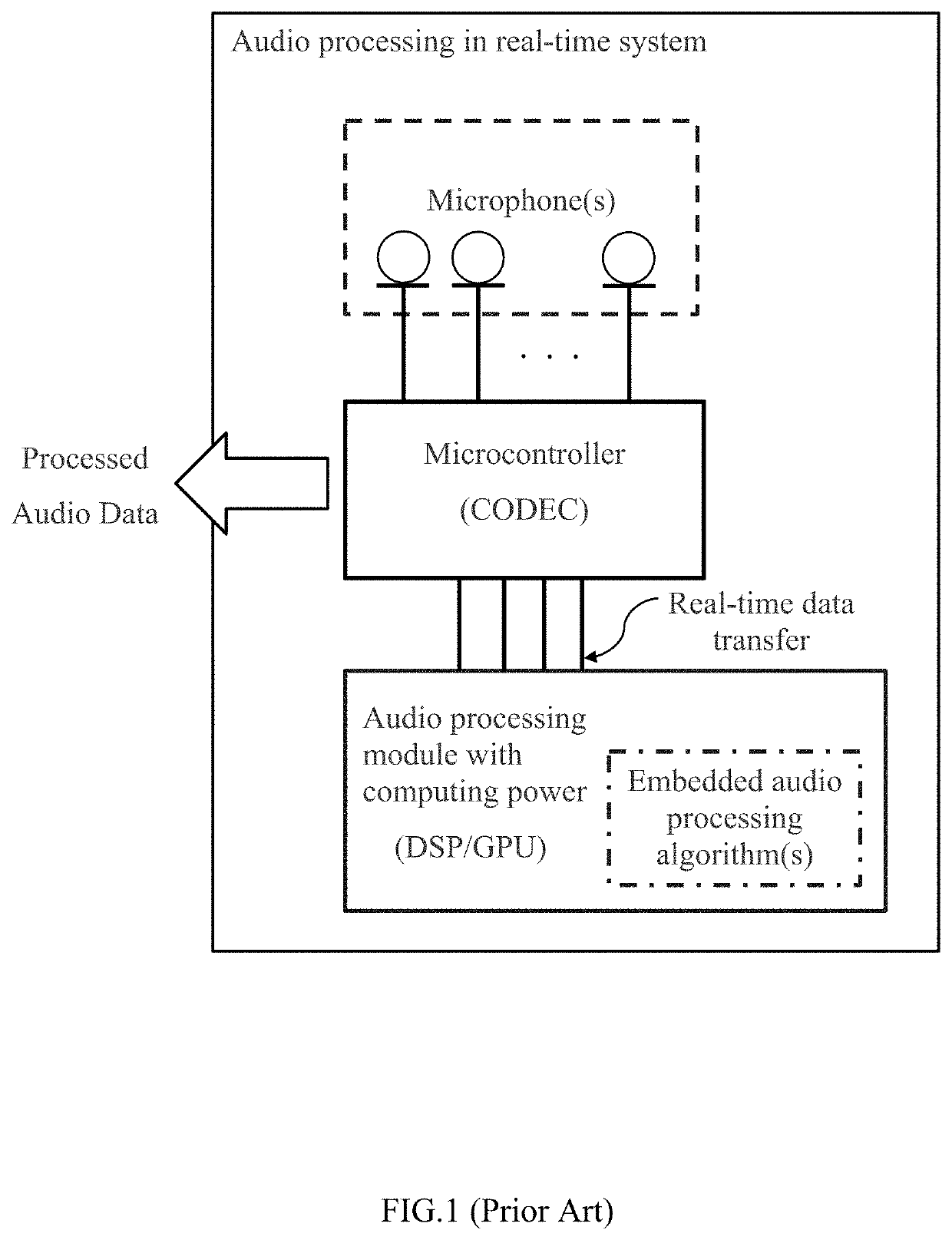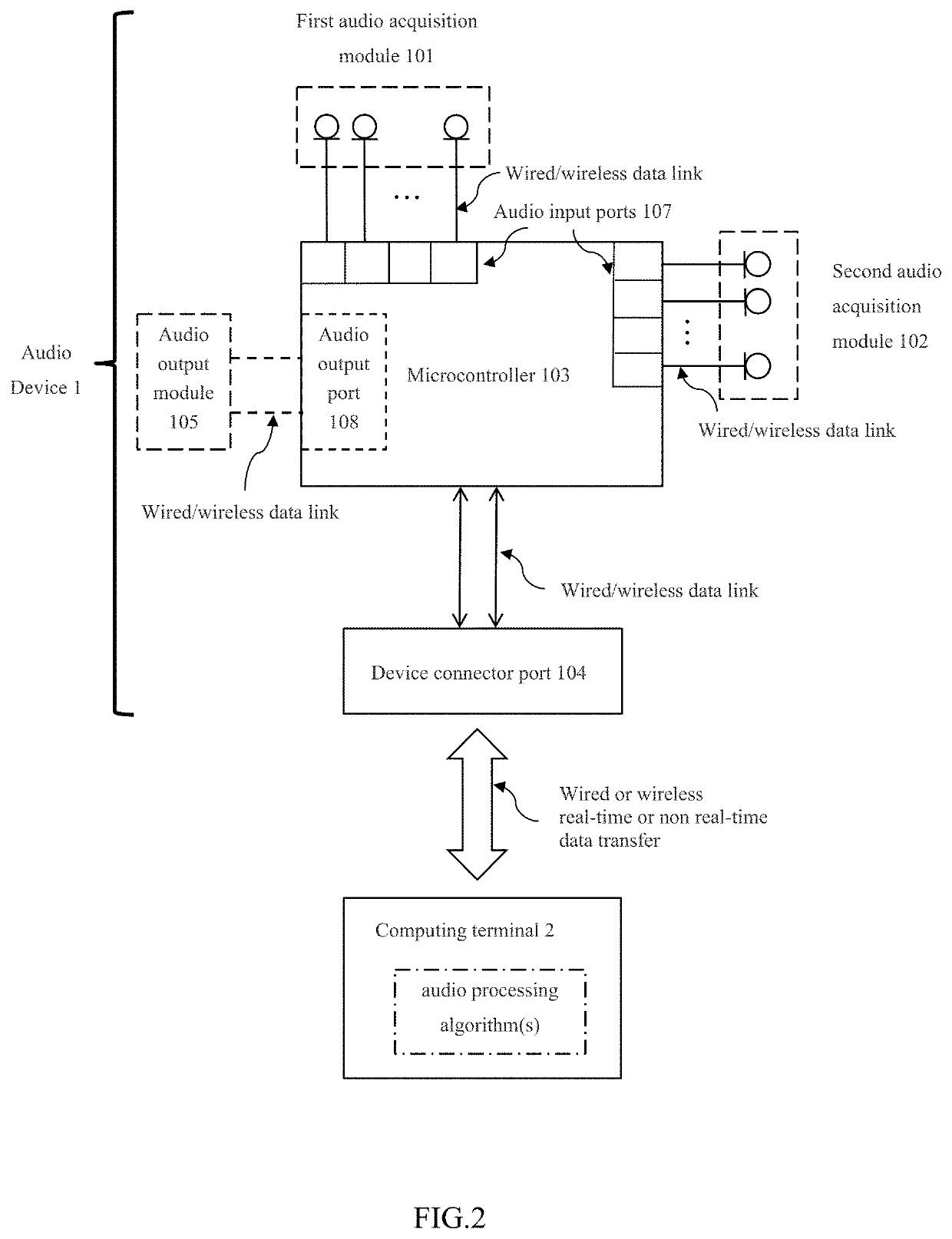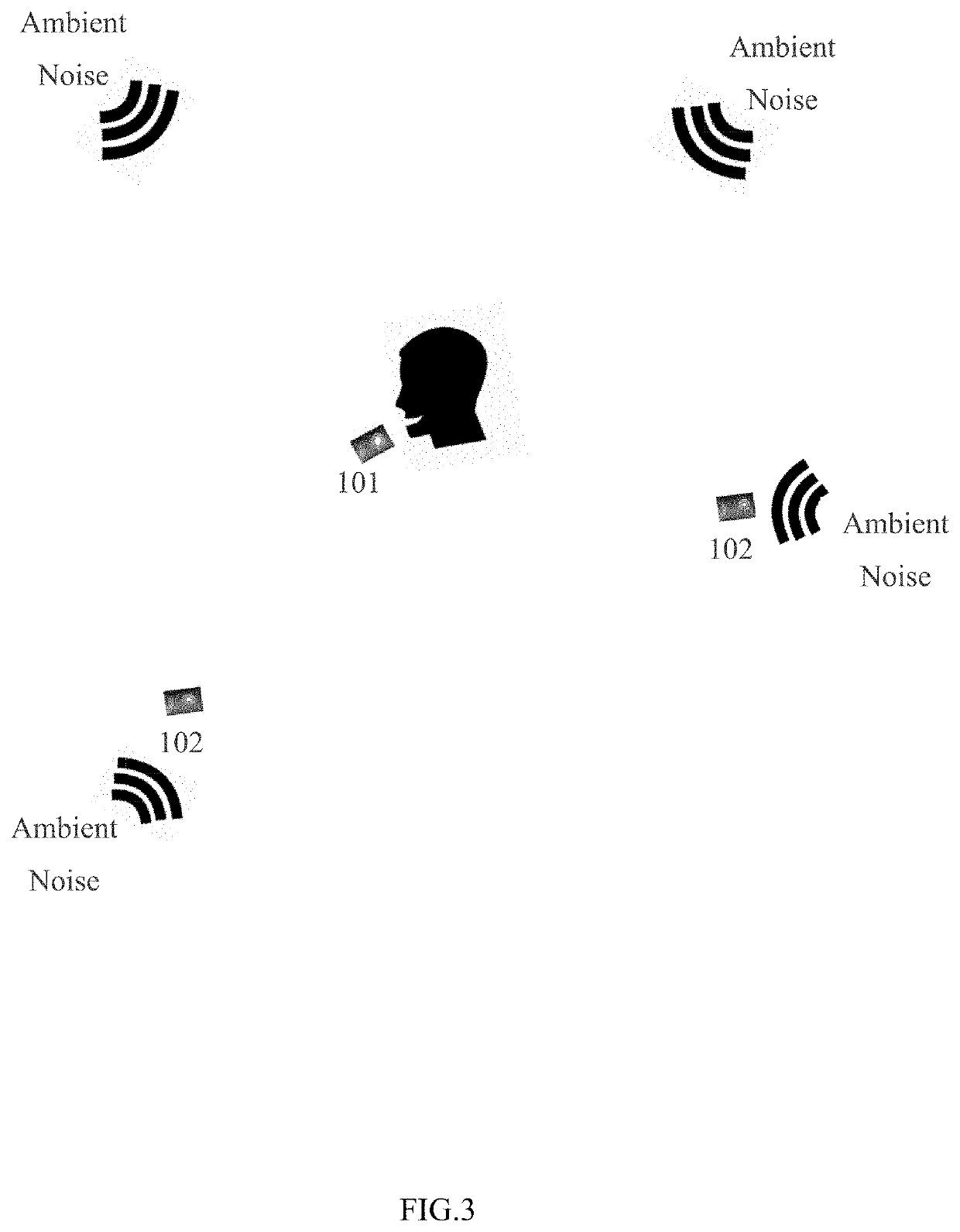Audio device, audio system, and audio processing method
a technology of audio processing and audio devices, applied in the direction of stereophonic circuit arrangements, loudspeakers, instruments, etc., can solve the problems of affecting the experiences of all participants, affecting the experience of all participants, and affecting the accuracy of audio signals, so as to improve the human-to-human voice communication quality, the effect of less target audio signals and less interferen
- Summary
- Abstract
- Description
- Claims
- Application Information
AI Technical Summary
Benefits of technology
Problems solved by technology
Method used
Image
Examples
Embodiment Construction
[0029]Reference will now be made in detail to exemplary embodiments of the preset disclosure, which are illustrated in the accompanying drawings. Hereinafter, embodiments consistent with the present disclosure will be described with reference to the drawings. Wherever possible, the same reference numbers will be used throughout the drawings to refer to the same or like parts. It is apparent that the described embodiments are some but not all of the embodiments of the present disclosure. Based on the disclosed embodiments, persons of ordinary skill in the art may derive other embodiments consistent with the present disclosure, all of which are within the scope of the present disclosure.
[0030]The present disclosure provides a solution to improve the user's experience of using an audio device. In particular, the present disclosure provides an audio device, an audio system, and an audio processing method that implements noise (echo) cancellation techniques to arrive at an accurate inter...
PUM
 Login to View More
Login to View More Abstract
Description
Claims
Application Information
 Login to View More
Login to View More - R&D
- Intellectual Property
- Life Sciences
- Materials
- Tech Scout
- Unparalleled Data Quality
- Higher Quality Content
- 60% Fewer Hallucinations
Browse by: Latest US Patents, China's latest patents, Technical Efficacy Thesaurus, Application Domain, Technology Topic, Popular Technical Reports.
© 2025 PatSnap. All rights reserved.Legal|Privacy policy|Modern Slavery Act Transparency Statement|Sitemap|About US| Contact US: help@patsnap.com



